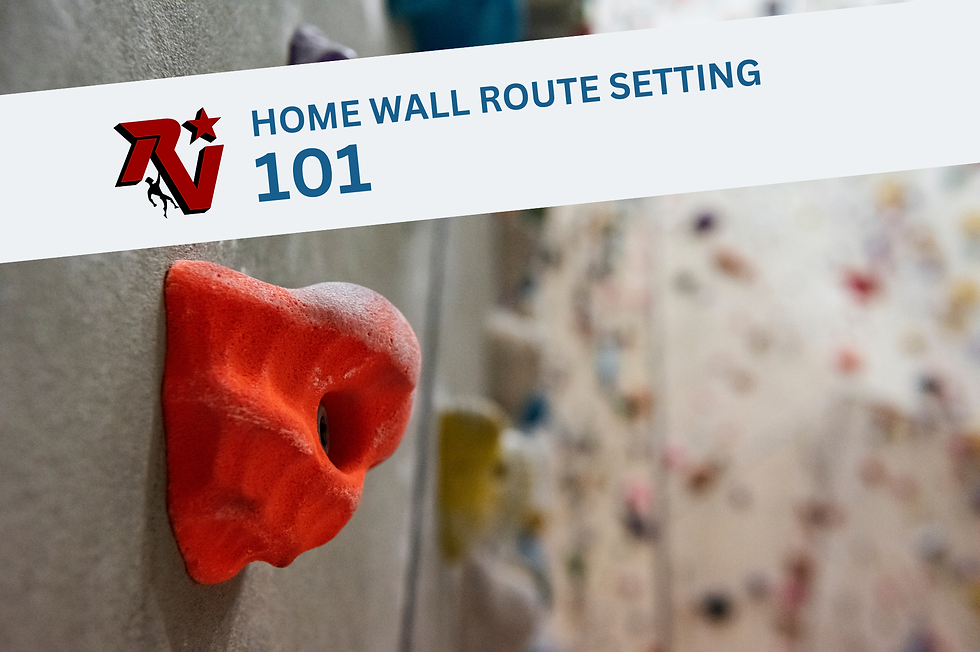Get Off the Plateau: Stop Spinning Your Wheels and Start Sending
- Dovi Hirsch
- May 5, 2022
- 3 min read
by Christopher Schafenacker

Climb long enough and you’ll hit a plateau. For some, progression stalls after months, for others it’s years. Always, this happens because your body adjusts to your present training regimen and requires change. Too much of anything, no matter how good, inhibits progress. If your climbing hasn’t grown in a season (or two, or three…) you probably need to vary your program.
You can’t vary what you don’t have, though. The first step to breaking through a plateau is thus programming your training in the first place.
Beginner—and even intermediate climbers—should spend almost all of their training hours actually climbing. At first, this can mean simply getting on whatever feels exciting, but continued improvement will depend on instituting some kind of structure. The Yosemite decimal system or V-grade scale is a convenient metric, but there’s more to getting better than simply surpassing your hardest grade. Eventually, weaknesses you’ve knowingly or unknowingly ignored will restrict improvement, and you’ll need to do more than just throw yourself at hard routes or boulders. Often, this means doing one of the following.
1. Get Strong
Getting strong is all about trying hard, and there are lots of ways to incorporate this into your climbing. For some, it may mean setting goals and recording progress related to the number of routes or boulders of a given grade sent in a given time frame. For others, it could be sending your present hardest grade in a style outside of your comfort zone. For others still, progress will require targeted supplemental finger or body strength training.
Figuring out which of the above is right for you is the job of a coach, trainer, or informed self-analysis. Performing the latter is easy with a well-designed home setup that permits meticulous control over training variables.
2. Target Technique
If you always climb in the same style, your climbing will be full of holes. Maybe you can crush V9 crimps but slide off V4 slopers; maybe you can kneebar your way up 5.14 but can’t edge to save your life. Addressing such imbalances requires new moves as much as new strength. Getting stronger only helps in the measure that you can apply your gains to your climbing. Want to get better at high-tension moves? Invest in programmed core training, and then get after those steep problems that demand high-tension movement.
3. Improve Your Head
Sometimes it really is all in your head. Every strong climber has put real work into their head game. Learning to try truly hard is a big part, but there’s much more to climbing’s mental aspect. Your expectations need to shift as you cycle through different parts of your training program. Success might mean sending hard, but it might also mean linking 15 moves on your least favorite hold type, hitting a new high point on your project, or completing a row of easier climbs on your grade pyramid.
No matter how you break through your plateau, you’ll want to get in the habit of taking notes. A written record not only reins in self-deception, it creates an accountability mechanism that helps you stick to your plan. Ultimately, most climbers plateau because they abandon structured training. This is fine if you don’t climb to get better; however, if you do, you’ll quickly stall if you don’t commit to the process.
Featured Climbing Training Gear
*NEW* The Rocketeer Wall: our free-standing adjustable solution for those who can’t mount a hangboard anywhere in their home or apartment—or who are limited on space. The Rocketeer gives climbers the additional option to set specific climbing holds. Recreate the crux holds of your proj and get ready to send, bruh.
The Rocket Wall: Available in 6’ and 8’ widths, it’s been tough for us to keep up with the demand for this innovative home climbing wall solution. Slightly overhanging, the Rocket Wall is big enough to set routes on, or to build a systems board.
The Rock-Stah: Our handcrafted version of a traditional hangboard, with curving crimp rails to help alleviate unnecessary strain on your pulleys. Because ain’t no one got time for a finger injury…










Comments